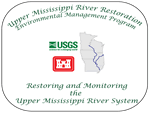All Location Codes All Stratified Random Sites (SRS)
All Fixed Sites
AL02.3M, Apple River
BX00.4M, Bad Axe River
BM00.7S, Big Muddy River
ST02.4M, Big Sister Creek
B001.0N, Black River
BK01.0M, Black River
BK01.0N, Black River
BK04.1Z, Black River
BK04.3Z, Black River
BK14.2M, Black River
BC04.6M, Bob's Creek
CR01.1M, Cache River
CA00.4M, Cahokia Creek
CN00.1M, Cannon River
CF00.3M, CatFish Creek
CH00.1M, Chippewa River
CC00.6M, Coon Creek
CC04.6M, Coon Creek
CU11.6M, Cuivre River
DC01.0M, Dardenne Creek
ER02.4M, Elk River
GA03.6M, Galena River
HD00.5M, Headwaters Diversion
HD00.9M, Headwaters Diversion
I000.0V, Illinois River
I002.0Y, Illinois River
I005.7M, Illinois River
I005.8K, Illinois River
I007.0W, Illinois River
I080.2C, Illinois River
I080.2M, Illinois River
I094.8D, Illinois River
I095.2C, Illinois River
I098.0C, Illinois River
I099.4C, Illinois River
I099.4D, Illinois River
I106.5X, Illinois River
I106.5Y, Illinois River
I106.8X, Illinois River
I107.0S, Illinois River
I107.2R, Illinois River
I109.5D, Illinois River
I113.0T, Illinois River
I121.2W, Illinois River
I121.5X, Illinois River
I122.5X, Illinois River
I122.6Y, Illinois River
I122.8C, Illinois River
I124.8R, Illinois River
I127.9W, Illinois River
I128.8F, Illinois River
I128.8T, Illinois River
I128.8W, Illinois River
I129.8W, Illinois River
I135.8W, Illinois River
I135.8X, Illinois River
I157.8D, Illinois River
LX00.1M, La Crosse River
LM00.5M, LaMoines River
LM07.2M, LaMoines River
MK04.4M, Mackinaw River
MQ00.1M, Maquoketa River
MQ02.1M, Maquoketa River
MC01.0M, Mill Creek
M009.7M, Mississippi River
M028.8K, Mississippi River
M030.5J, Mississippi River
M030.9M, Mississippi River
M032.2M, Mississippi River
M033.7M, Mississippi River
M034.2M, Mississippi River
M035.7O, Mississippi River
M038.0N, Mississippi River
M038.1J, Mississippi River
M038.5J, Mississippi River
M038.5N, Mississippi River
M039.2N, Mississippi River
M041.1L, Mississippi River
M048.0O, Mississippi River
M048.4M, Mississippi River
M048.5M, Mississippi River
M048.9G, Mississippi River
M050.7I, Mississippi River
M050.8I, Mississippi River
M053.8B, Mississippi River
M054.2B, Mississippi River
M055.9D, Mississippi River
M056.0I, Mississippi River
M057.5B, Mississippi River
M057.6B, Mississippi River
M057.9L, Mississippi River
M059.2D, Mississippi River
M059.5I, Mississippi River
M060.3D, Mississippi River
M061.2C, Mississippi River
M062.0B, Mississippi River
M066.3A, Mississippi River
M066.3B, Mississippi River
M066.4C, Mississippi River
M069.4C, Mississippi River
M070.1C, Mississippi River
M070.2A, Mississippi River
M070.4C, Mississippi River
M075.1C, Mississippi River
M076.2C, Mississippi River
M077.9A, Mississippi River
M078.0B, Mississippi River
M079.3B, Mississippi River
M193.2F, Mississippi River
M193.2H, Mississippi River
M193.2J, Mississippi River
M196.9Q, Mississippi River
M201.7Q, Mississippi River
M202.2N, Mississippi River
M202.2R, Mississippi River
M202.2V, Mississippi River
M202.6T, Mississippi River
M202.6V, Mississippi River
M202.6X, Mississippi River
M202.9N, Mississippi River
M202.9Q, Mississippi River
M203.5Q, Mississippi River
M203.5R, Mississippi River
M205.8K, Mississippi River
M206.0S, Mississippi River
M206.1T, Mississippi River
M207.9Q, Mississippi River
M211.2P, Mississippi River
M212.3X, Mississippi River
M212.4X, Mississippi River
M219.4U, Mississippi River
M219.5U, Mississippi River
M220.2T, Mississippi River
M224.2S, Mississippi River
M235.3D, Mississippi River
M235.5D, Mississippi River
M235.6J, Mississippi River
M237.2G, Mississippi River
M237.3T, Mississippi River
M237.4T, Mississippi River
M240.9M, Mississippi River
M241.3K, Mississippi River
M241.4K, Mississippi River
M497.2B, Mississippi River
M508.1F, Mississippi River
M511.4B, Mississippi River
M520.6B, Mississippi River
M524.2X, Mississippi River
M525.3I, Mississippi River
M525.5C, Mississippi River
M525.5F, Mississippi River
M525.5J, Mississippi River
M525.5K, Mississippi River
M525.5L, Mississippi River
M525.5N, Mississippi River
M525.8H, Mississippi River
M526.0G, Mississippi River
M529.7L, Mississippi River
M529.7M, Mississippi River
M530.2K, Mississippi River
M530.3K, Mississippi River
M530.9G, Mississippi River
M532.2T, Mississippi River
M532.3T, Mississippi River
M534.8L, Mississippi River
M535.9J, Mississippi River
M535.9K, Mississippi River
M536.2P, Mississippi River
M536.4B, Mississippi River
M536.8L, Mississippi River
M536.9M, Mississippi River
M540.2T, Mississippi River
M541.7L, Mississippi River
M542.5E, Mississippi River
M542.7C, Mississippi River
M543.2L, Mississippi River
M543.2M, Mississippi River
M543.6G, Mississippi River
M544.1D, Mississippi River
M544.2C, Mississippi River
M544.2D, Mississippi River
M544.5F, Mississippi River
M544.6E, Mississippi River
M544.6F, Mississippi River
M544.7F, Mississippi River
M545.1H, Mississippi River
M545.5B, Mississippi River
M545.5C, Mississippi River
M545.8F, Mississippi River
M546.5L, Mississippi River
M546.7P, Mississippi River
M548.6L, Mississippi River
M550.4L, Mississippi River
M550.5L, Mississippi River
M551.3M, Mississippi River
M551.3N, Mississippi River
M551.6N, Mississippi River
M552.3L, Mississippi River
M554.0G, Mississippi River
M554.2C, Mississippi River
M554.3C, Mississippi River
M554.3D, Mississippi River
M554.8E, Mississippi River
M554.8F, Mississippi River
M556.0E, Mississippi River
M556.4A, Mississippi River
M556.4C, Mississippi River
M556.6E, Mississippi River
M563.9T, Mississippi River
M564.5T, Mississippi River
M566.2R, Mississippi River
M574.2D, Mississippi River
M582.5B, Mississippi River
M615.2B, Mississippi River
M646.9X, Mississippi River
M647.9X, Mississippi River
M663.4E, Mississippi River
M666.3N, Mississippi River
M667.8F, Mississippi River
M679.2Z, Mississippi River
M679.5V, Mississippi River
M679.5W, Mississippi River
M679.5X, Mississippi River
M679.5Y, Mississippi River
M679.5Z, Mississippi River
M680.8M, Mississippi River
M680.8U, Mississippi River
M681.3B, Mississippi River
M684.8W, Mississippi River
M684.8Y, Mississippi River
M685.0D, Mississippi River
M685.0E, Mississippi River
M685.9L, Mississippi River
M685.9M, Mississippi River
M686.1V, Mississippi River
M686.1W, Mississippi River
M686.4K, Mississippi River
M686.6J, Mississippi River
M687.6F, Mississippi River
M687.6G, Mississippi River
M687.8X, Mississippi River
M689.2A, Mississippi River
M689.2B, Mississippi River
M690.2A, Mississippi River
M690.4A, Mississippi River
M690.8B, Mississippi River
M691.3B, Mississippi River
M691.6E, Mississippi River
M691.7S, Mississippi River
M691.7T, Mississippi River
M691.9B, Mississippi River
M692.5C, Mississippi River
M692.7R, Mississippi River
M692.8P, Mississippi River
M692.8Q, Mississippi River
M694.0N, Mississippi River
M694.7L, Mississippi River
M694.7M, Mississippi River
M696.5D, Mississippi River
M696.5F, Mississippi River
M696.8I, Mississippi River
M698.1G, Mississippi River
M698.3D, Mississippi River
M698.5B, Mississippi River
M700.2F, Mississippi River
M701.0B, Mississippi River
M701.1B, Mississippi River
M701.1C, Mississippi River
M701.1D, Mississippi River
M701.1E, Mississippi River
M701.1F, Mississippi River
M701.4I, Mississippi River
M701.7I, Mississippi River
M701.8C, Mississippi River
M701.8H, Mississippi River
M702.3A, Mississippi River
M702.5B, Mississippi River
M702.7T, Mississippi River
M738.2F, Mississippi River
M738.2M, Mississippi River
M738.2T, Mississippi River
M742.6B, Mississippi River
M742.8D, Mississippi River
M743.0E, Mississippi River
M745.2L, Mississippi River
M746.9Y, Mississippi River
M747.3R, Mississippi River
M752.8M, Mississippi River
M752.8Y, Mississippi River
M752.8Z, Mississippi River
M752.9M, Mississippi River
M752.9Y, Mississippi River
M752.9Z, Mississippi River
M753.1X, Mississippi River
M753.2S, Mississippi River
M753.2V, Mississippi River
M757.2Z, Mississippi River
M757.4O, Mississippi River
M757.5O, Mississippi River
M758.6X, Mississippi River
M758.6Y, Mississippi River
M760.7O, Mississippi River
M761.5E, Mississippi River
M764.3A, Mississippi River
M764.8G, Mississippi River
M766.0B, Mississippi River
M766.0I, Mississippi River
M766.0O, Mississippi River
M771.2P, Mississippi River
M775.6L, Mississippi River
M775.6Q, Mississippi River
M775.6Y, Mississippi River
M781.2E, Mississippi River
M781.2O, Mississippi River
M781.2X, Mississippi River
M786.1S, Mississippi River
M786.2C, Mississippi River
M786.5D, Mississippi River
M787.6H, Mississippi River
M787.9H, Mississippi River
M790.3F, Mississippi River
M792.5N, Mississippi River
M793.9P, Mississippi River
M795.8L, Mississippi River
M796.7M, Mississippi River
M796.9M, Mississippi River
M796.9N, Mississippi River
MO02.0X, Missouri River
PE01.8M, Peruque Creek
PI00.2M, Piasa Creek
PR03.2M, Plum River
QV04.6M, Quiver Creek
RK00.1M, Rock Creek
RK03.7M, Rock Creek
R000.1M, Root River
RC01.7M, Rush Creek
SG16.2C, Sangamon River
S000.2K, Spoon River
TM04.1M, Tete de Mortes Creek
TK04.8M, Turkey River
UI02.9M, Upper Iowa River
VM00.1M, Vermillion River
WP02.6M, Wapsipinicon River
WC00.8M, Wells Creek
WW01.3M, Whitewater River
WS05.0Y, Wisconsin River
WD00.2M, Wood River
YL01.5Y, Yellow River
ZM00.1M, Zumbro River





